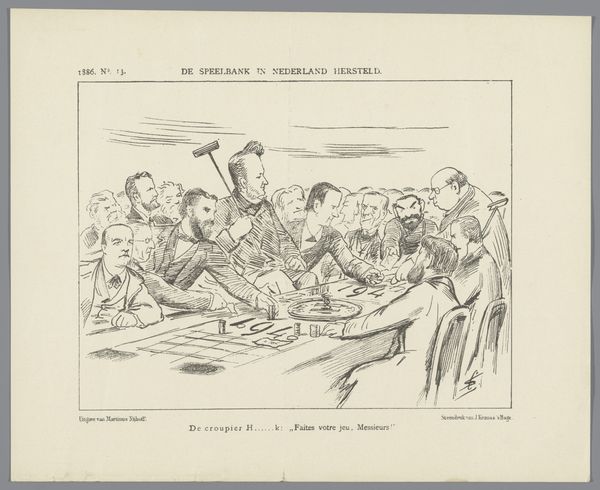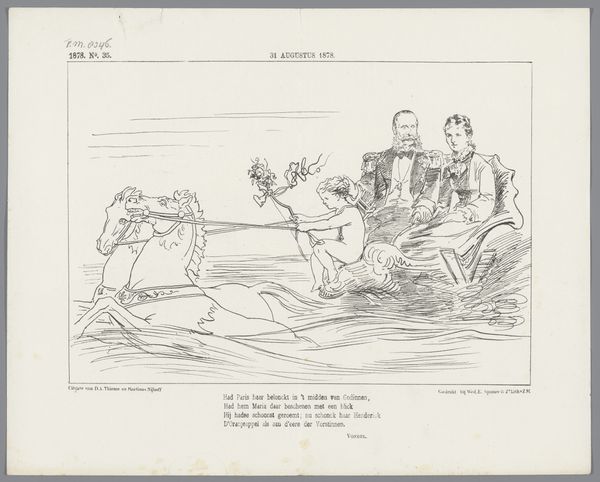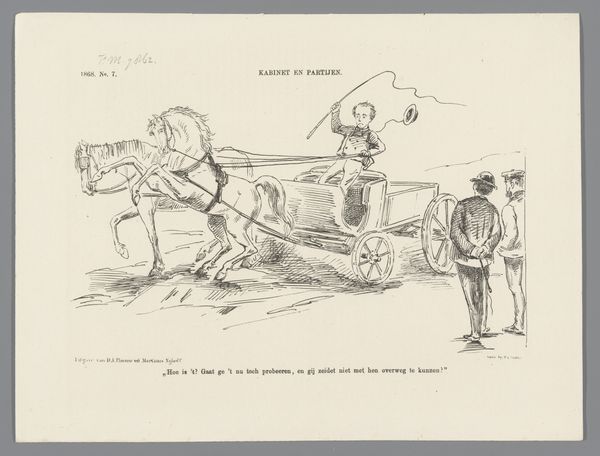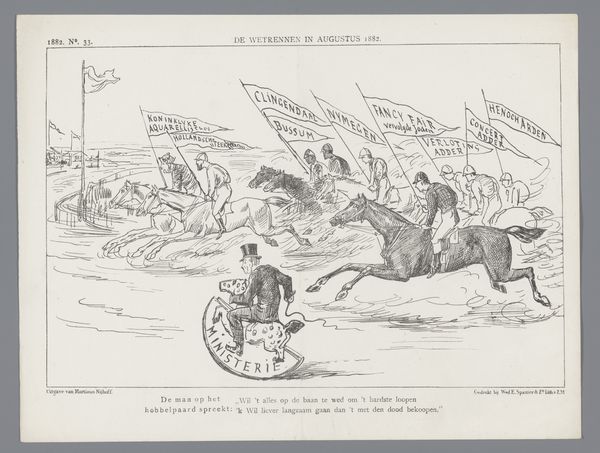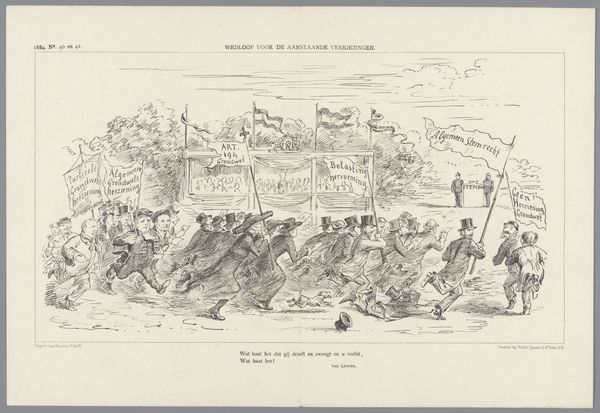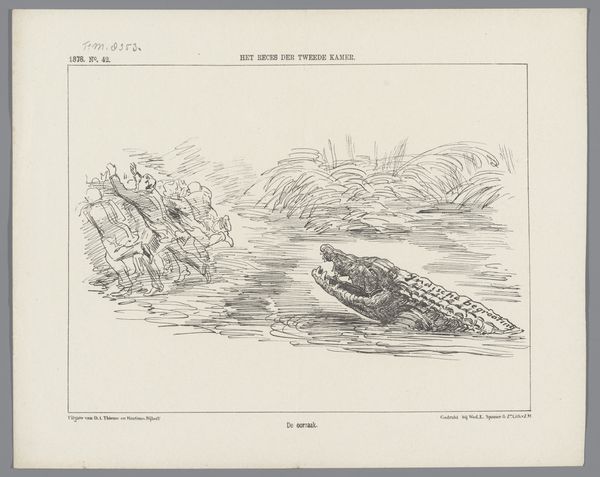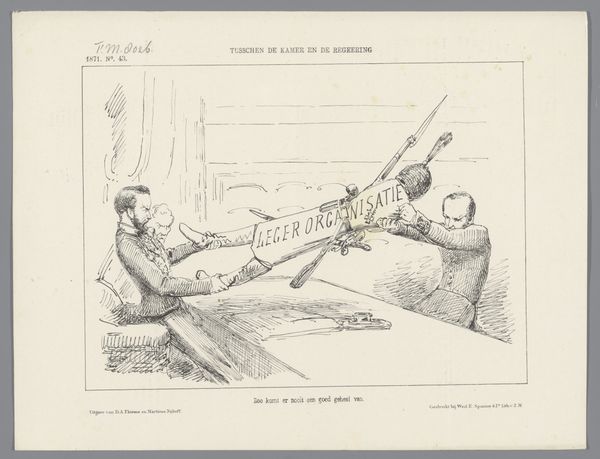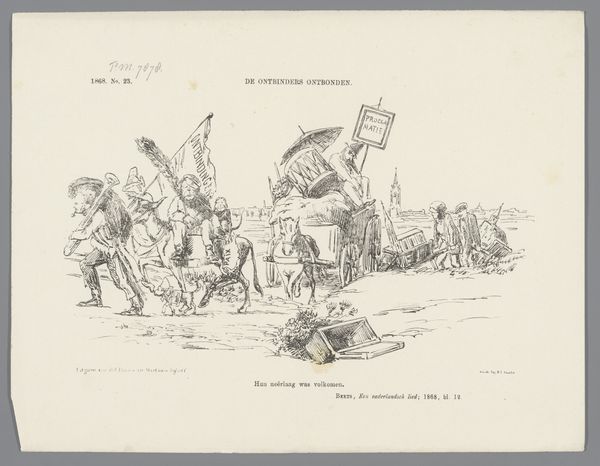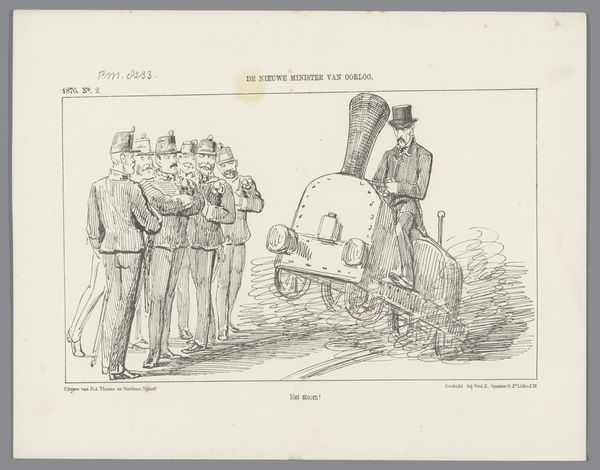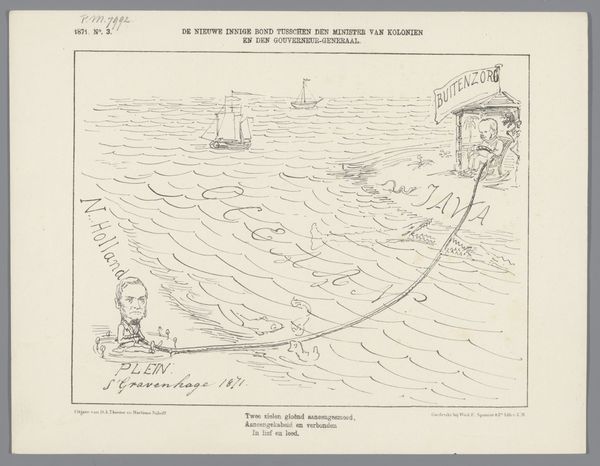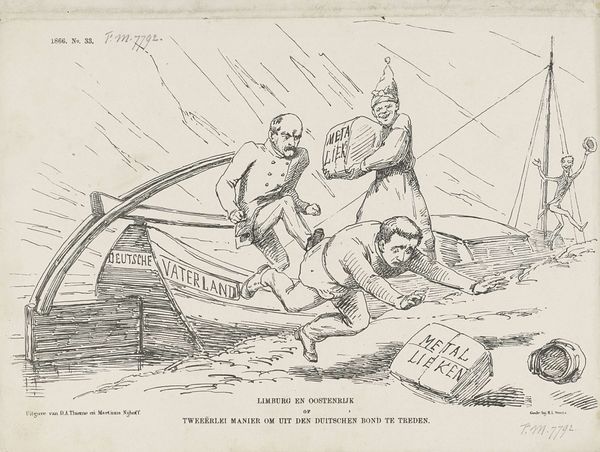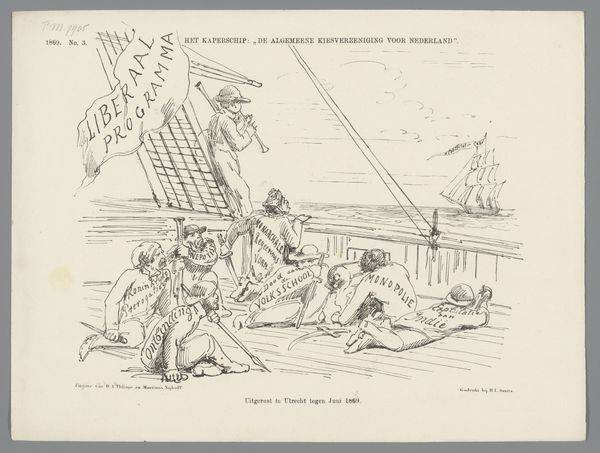
Spotprent op het verzet in de Tweede Kamer tegen de begroting, 1885 1885
0:00
0:00
drawing, print, paper, ink
#
drawing
#
narrative-art
# print
#
caricature
#
paper
#
ink
#
line
#
history-painting
#
realism
Dimensions: height 215 mm, width 275 mm
Copyright: Rijks Museum: Open Domain
Editor: This ink drawing on paper, titled "Spotprent op het verzet in de Tweede Kamer tegen de begroting, 1885," which translates to "Cartoon on the resistance in the Lower House against the budget, 1885" was created by Johan Michaël Schmidt Crans. It looks like a very critical take on a political issue. What do you see in this piece that helps us understand its cultural and historical context? Curator: Well, immediately, the title gives us a huge clue: "resistance in the Lower House against the budget." The imagery of people struggling to push what seems like an oversized budget up a hill tells us about the fraught political landscape of the time. Do you notice how the artist chose to depict the figures? Editor: Yeah, they seem…caricatured, exaggerated, even? The ones pushing the budget have really strained faces and postures. Then there are these other men on the side. It is confusing. What would an audience at the time of its publication think about this drawing, considering the prominent caricatures and overall visual messaging? Curator: Precisely. The exaggerated features serve a political purpose. Caricatures often rely on shared understandings and inside jokes. And there on the sidelines we see people holding axes or pickaxes. Knowing that would immediately suggest a position, pro or con, regarding this political budget. Considering that it uses very basic imagery, is it aimed at certain audiences? Editor: Perhaps a middle-class or bourgeois audience familiar with current affairs? The artist might be inviting them to critique or question the political process. Seeing this today helps me understand that political art isn't new. Visuals have always played a key role in social commentary. Curator: Absolutely. It makes you think about the function of political satire, even now, doesn’t it? To engage and, hopefully, to hold those in power accountable through accessible visual language. Editor: It definitely does. This artwork opens up a broader perspective on the relationship between political action, the public sphere, and artistic interpretation in 1885. Thanks for making that history so palpable.
Comments
No comments
Be the first to comment and join the conversation on the ultimate creative platform.
